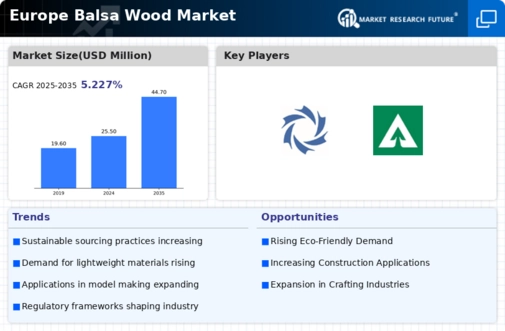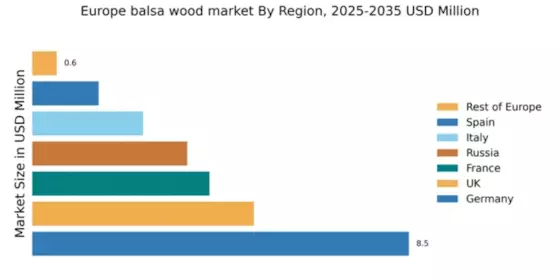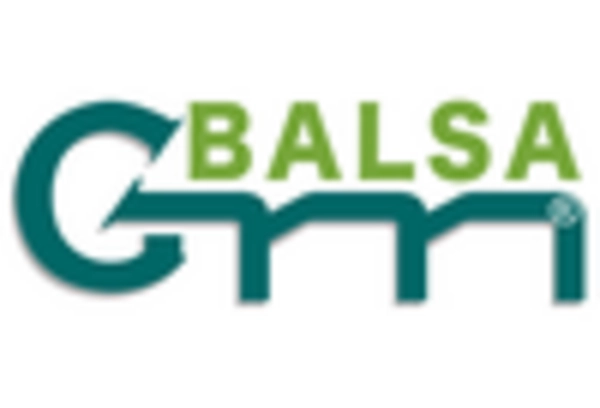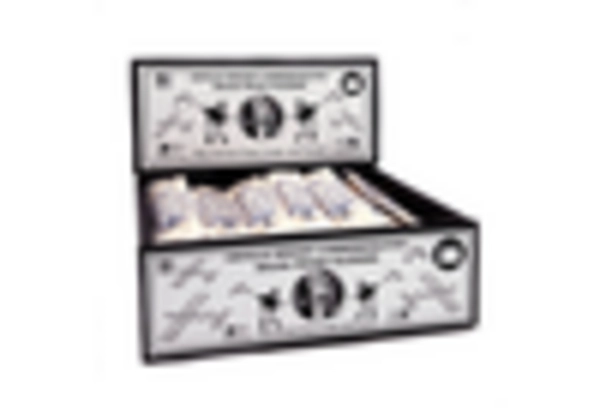Increased Use in Model Making
The balsa wood market in Europe experiences a notable surge in demand due to its extensive application in model making. This sector, which includes architectural models, aircraft models, and hobbyist projects, relies heavily on the lightweight and easy-to-work-with properties of balsa wood. The market for model making materials is projected to grow at a CAGR of approximately 5% over the next five years, indicating a robust interest in balsa wood products. As enthusiasts and professionals seek high-quality materials, the balsa wood market stands to benefit significantly from this trend. Furthermore, the accessibility of balsa wood in various sizes and shapes enhances its appeal, making it a preferred choice among model makers across Europe.
Growth in Eco-Friendly Products
The balsa wood market in Europe is increasingly influenced by the rising consumer preference for eco-friendly products. As sustainability becomes a priority for many consumers, balsa wood, known for its renewable nature, aligns well with this trend. The market for sustainable materials is expected to expand, with estimates suggesting a growth rate of around 7% annually. This shift towards environmentally responsible choices is prompting manufacturers to source balsa wood from certified forests, ensuring that their products meet the growing demand for sustainability. Consequently, the balsa wood market is likely to see an uptick in sales as more companies adopt eco-friendly practices and promote their use of sustainable materials.
Rising Interest in DIY Projects
The balsa wood market in Europe is benefiting from a rising interest in DIY projects among consumers. As more individuals engage in home improvement and crafting activities, the demand for balsa wood has seen a marked increase. This trend is supported by the growing availability of online resources and tutorials that encourage DIY enthusiasts to explore creative projects. The DIY market is expected to grow at a rate of around 6% over the next few years, which could translate into higher sales for balsa wood products. The lightweight nature and ease of manipulation of balsa wood make it an ideal choice for various DIY applications, further solidifying its position in the market.
Innovation in Product Development
The balsa wood market in Europe is experiencing a wave of innovation in product development. Manufacturers are increasingly exploring new applications and enhancements for balsa wood, such as composite materials that combine balsa with other substances to improve performance. This innovation is driven by the need for higher durability and functionality in various applications, including aerospace and automotive industries. The market for advanced composite materials is projected to grow significantly, potentially reaching a value of €10 billion by 2027. As companies invest in research and development, the balsa wood market is likely to see a diversification of its product offerings, catering to a broader range of industries and applications.
Expansion in the Construction Sector
The balsa wood market in Europe is poised for growth due to the expansion of the construction sector. Balsa wood is increasingly utilized in lightweight construction applications, particularly in the creation of temporary structures and insulation materials. The construction industry in Europe is projected to grow by approximately 4% annually, driven by urbanization and infrastructure development. This growth presents a significant opportunity for the balsa wood market, as builders and architects seek materials that offer both strength and reduced weight. The versatility of balsa wood makes it an attractive option for various construction applications, potentially leading to increased demand and innovation within the industry.


















Leave a Comment